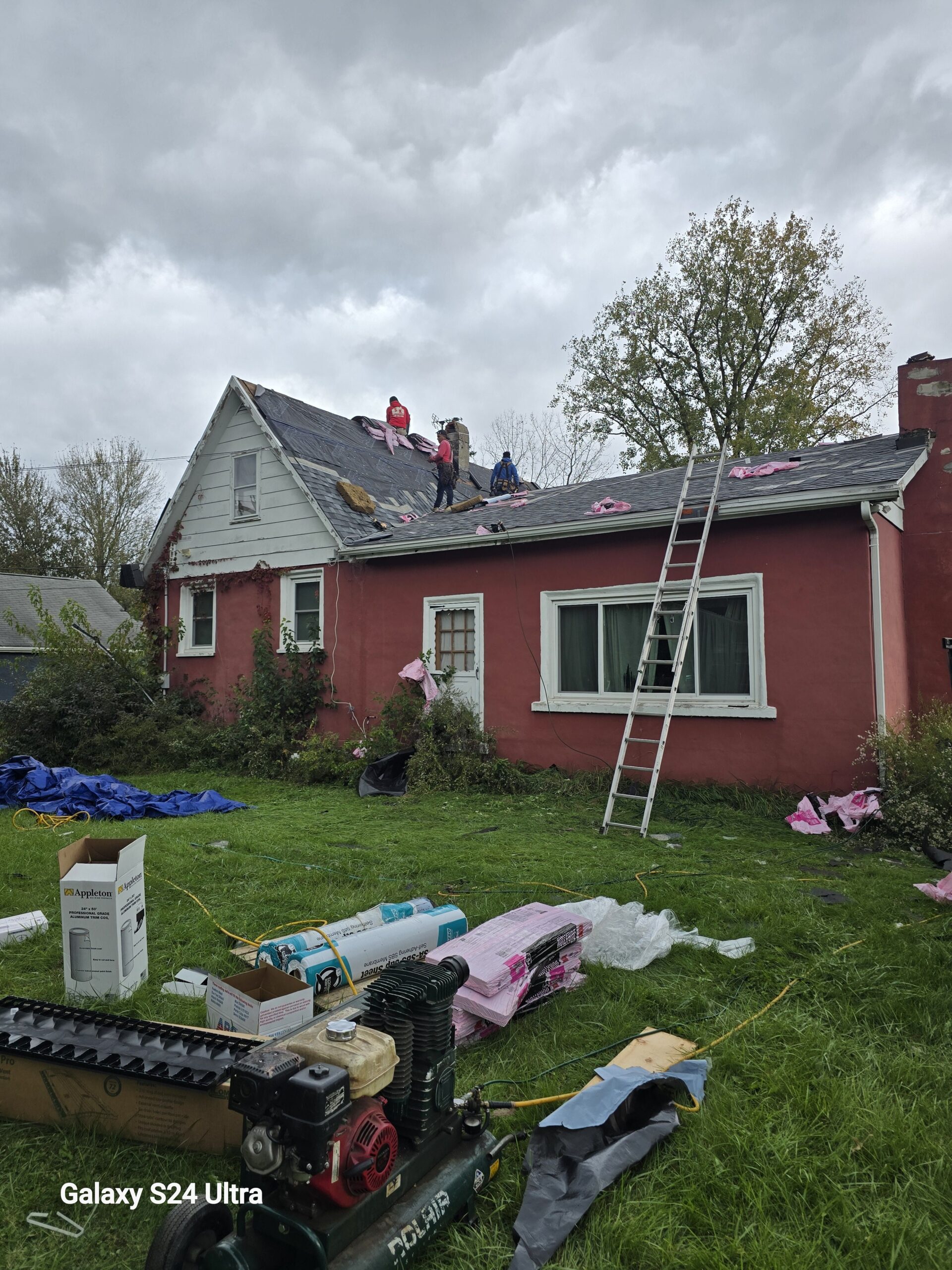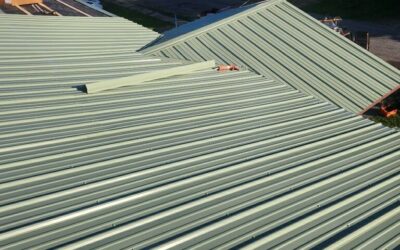Does My Roof Need Intake Ventilation? A Comprehensive Guide for Homeowners
When it comes to maintaining a healthy and durable roof, proper ventilation is essential. Ventilation is one of the most crucial aspects of roofing that homeowners often overlook, and intake ventilation is an important part of this system. In this comprehensive guide, we’ll explore what intake ventilation is, why it’s important, how it works, and whether your roof needs intake ventilation. We will also cover the different types of roof ventilation systems, the signs that indicate you may need intake ventilation, and the potential risks of not having it in place.
What Is Roof Intake Ventilation?
Roof intake ventilation, also known as soffit ventilation, is an essential part of the attic ventilation system. It involves the installation of vents along the eaves (the edges) of your roof, typically located in the soffit area, which is the underside of the roof overhang. These vents allow fresh air to enter the attic and circulate, which helps regulate temperature and humidity levels inside the attic.
Intake ventilation works in tandem with exhaust ventilation, which is typically installed at the roof’s peak. Together, the intake and exhaust vents create a natural airflow system that promotes the movement of air throughout the attic, expelling hot air and moisture and bringing in cool, fresh air.
Why Is Roof Intake Ventilation Important?
Proper ventilation is a critical factor in maintaining a healthy roof and attic space. Without adequate intake ventilation, your attic can suffer from a variety of issues that can affect your home’s overall health and safety. Here are some key reasons why intake ventilation is essential for your roof:
1. Prevents Ice Dams
In colder climates, poor attic ventilation can lead to the formation of ice dams. When warm air accumulates in the attic, it causes snow on the roof to melt. The water then runs down the roof and refreezes at the eaves, where the temperature is colder. This cycle creates ice dams that block the proper flow of water, causing it to back up under the shingles and potentially leak into the attic. Adequate intake and exhaust ventilation help keep the attic cool, preventing the formation of ice dams.
2. Reduces Moisture Buildup
Excessive moisture in the attic can lead to problems like mold growth, wood rot, and structural damage. Moisture can accumulate in the attic due to activities such as cooking, showering, and even breathing. Without proper ventilation, this moisture remains trapped, leading to potential long-term damage. Intake ventilation helps reduce humidity levels by allowing fresh air to circulate and expel excess moisture from the attic.
3. Improves Energy Efficiency
An improperly ventilated attic can cause temperature imbalances in your home, leading to higher heating and cooling costs. Without intake ventilation, warm air can become trapped in the attic, making it harder for your HVAC system to maintain a consistent temperature throughout the house. Proper ventilation allows hot air to escape in the summer and cold air to exit in the winter, improving overall energy efficiency and reducing utility bills.
4. Prolongs the Life of Your Roof
Excessive heat and moisture in the attic can cause shingles to deteriorate prematurely. Without proper ventilation, shingles can become soft, cracked, or warped due to the buildup of heat and moisture. By maintaining a balanced airflow with intake and exhaust ventilation, you can extend the lifespan of your roof and reduce the need for costly repairs or replacements.
5. Prevents Condensation
Condensation occurs when warm, moist air in the attic comes into contact with cooler surfaces, such as the roof deck. This can lead to water droplets forming on the underside of the roof, which can cause mold growth, wood rot, and structural damage over time. Intake ventilation helps promote airflow and prevents condensation from accumulating on the roof deck.
How Does Roof Intake Ventilation Work?
Roof intake ventilation works by allowing fresh, cooler air to enter the attic space, replacing the hot, moist air that builds up. This circulation of air creates a natural airflow system that prevents issues like heat buildup and excess humidity.
Typically, the intake vents are installed near the bottom of the roof, along the eaves or soffits. These vents allow cool, outside air to flow into the attic, while the exhaust vents, located at the roof’s peak, allow hot, humid air to escape. This creates a balanced ventilation system that promotes air circulation.
As hot air rises, it naturally moves toward the highest point of the attic, where it exits through the exhaust vents. At the same time, cooler air enters the attic through the intake vents at the lower points, ensuring that a steady flow of air moves through the attic. This natural airflow helps regulate the temperature and humidity levels in the attic and throughout the rest of the home.
Does My Roof Need Intake Ventilation?
Now that we’ve established the importance of intake ventilation, you may be wondering whether your roof actually needs it. In most cases, the answer is yes. Here are some indicators that your roof may need intake ventilation:
1. You Have an Unventilated or Poorly Ventilated Attic
If your attic is not properly ventilated, it’s crucial to install intake vents. A poorly ventilated attic can lead to a variety of issues, including excessive heat buildup, moisture accumulation, and the potential for mold or mildew growth. If you notice that your attic is consistently hot or stuffy, it’s likely that the ventilation system is inadequate.
2. You Live in a Hot or Humid Climate
If you live in a region with hot or humid weather, intake ventilation is essential to maintaining a comfortable and energy-efficient home. In these climates, heat buildup in the attic can lead to higher cooling costs and discomfort inside your home. Intake ventilation helps maintain a cooler attic and reduces the strain on your HVAC system.
3. You Have a Roof Without Proper Soffits
If your roof does not have soffits (the horizontal, overhanging eaves of the roof), you may not have any intake ventilation at all. In this case, it’s important to install soffit vents to promote proper airflow in the attic. Without these vents, the attic can become a breeding ground for heat and moisture, leading to potential damage to your roof and home.
4. You Have Roof Damage or Premature Shingle Deterioration
If you’ve noticed that your roof is deteriorating prematurely, this could be a sign that the attic is not properly ventilated. Without proper ventilation, heat and moisture can cause shingles to crack, curl, or warp. If you’re experiencing issues with roof damage, it’s a good idea to have a professional inspect your ventilation system to determine if it needs improvement.
5. You Notice Ice Dams or Excessive Condensation
If you live in a cold climate and have noticed ice dams forming along your roof’s edge, your attic may not be properly ventilated. Ice dams occur when warm air in the attic melts snow on the roof, causing it to refreeze at the eaves. Proper ventilation can help prevent this issue by maintaining a cooler attic temperature. Similarly, if you see condensation in your attic, it’s a sign that your roof may need intake ventilation to reduce moisture buildup.
6. You Experience High Energy Bills
If you’ve noticed that your energy bills are higher than expected, poor attic ventilation could be the culprit. Without proper airflow, your HVAC system has to work harder to maintain a comfortable temperature in the home, leading to increased energy costs. Installing intake ventilation can improve energy efficiency by promoting airflow and helping your HVAC system run more effectively.
Types of Roof Intake Ventilation
There are several types of intake ventilation systems that can be used to ensure proper airflow in your attic. Here are the most common types of roof intake ventilation:
1. Soffit Vents
Soffit vents are the most common form of intake ventilation. These vents are installed in the soffit, which is the underside of the roof overhang. Soffit vents allow cool air to enter the attic from the outside while working in conjunction with exhaust vents at the roof’s peak to create a balanced airflow system. There are two main types of soffit vents: continuous soffit vents (which run the entire length of the eave) and individual soffit vents (which are spaced along the eaves).
2. Ridge Vents
While ridge vents are technically an exhaust vent, they often work in tandem with intake ventilation. Installed at the peak of the roof, ridge vents allow hot air to escape the attic, creating a natural airflow. When combined with soffit vents or other intake vents, ridge vents help maintain a balanced ventilation system.
3. Fascia Vents
Fascia vents are installed in the fascia board, the horizontal board that runs along the edge of the roof. These vents allow air to enter the attic and are often used in conjunction with soffit vents. Fascia vents can be a good option for homes that don’t have soffits or where soffit installation is not feasible.
4. Gable Vents
Gable vents are installed on the gable ends of the roof, typically on the sides of the house. These vents can serve as both intake and exhaust vents, depending on how they are installed. Gable vents are most effective when combined with other forms of intake and exhaust ventilation.
Signs Your Roof Ventilation Needs an Upgrade
If you’re unsure whether your roof ventilation system is working properly, here are some signs that it may need an upgrade:
- Your attic is excessively hot or humid.
- You notice mold, mildew, or condensation in the attic.
- You see ice dams forming along the edges of your roof.
- Your roof shingles are prematurely deteriorating or curling.
- You have high energy bills due to inefficiencies in heating or cooling.
If you’re experiencing any of these issues, it’s a good idea to have a roofing professional inspect your attic ventilation system to determine whether intake ventilation needs to be added or upgraded.
Conclusion: Ensure Proper Roof Ventilation for a Healthier Home
Roof intake ventilation is a crucial component of your home’s overall roofing system. It helps regulate temperature, reduce moisture buildup, prevent ice dams, and improve energy efficiency. If you’ve noticed signs that your attic is not properly ventilated, it’s essential to address the issue promptly by installing or upgrading intake ventilation.
Proper roof ventilation extends the lifespan of your roof, prevents costly repairs, and contributes to a healthier home environment. If you’re unsure whether your roof needs intake ventilation or if you need assistance with installation, contact a professional roofing contractor who can assess your attic’s needs and ensure that your home’s ventilation system is up to par.
 (440) 307-2060
(440) 307-2060


